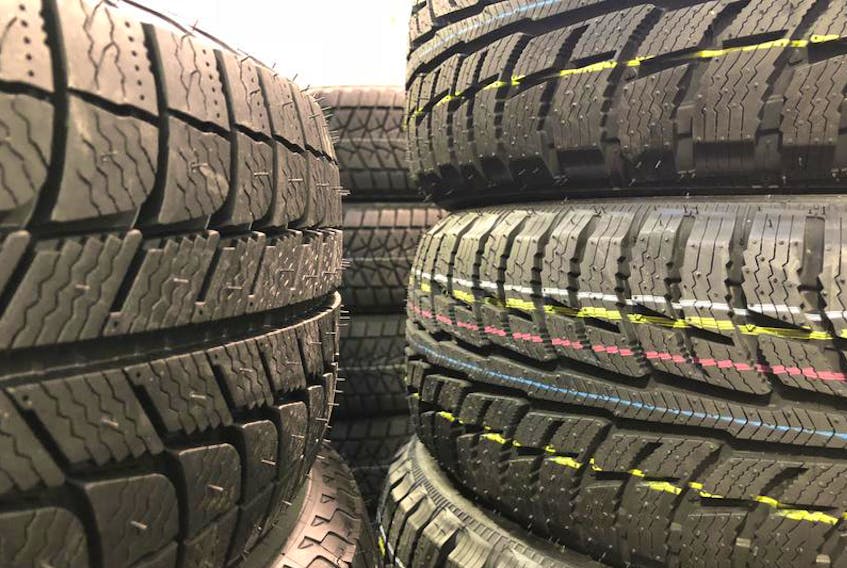The safest way to tackle winter driving conditions is with a set of quality winter tires.
Tires are the single most important safety feature of any vehicle.
They are the only point where your vehicle touches the road.
Tires determine how well you can turn, stop or get underway.
The effectiveness of all the electronic safety aids, from anti-lock brakes to stability and traction control, depends on the grip provided by the tires.
To maximize that grip, you need tires suited to conditions. For winter that means winter tires. These used to be called snow tires, but that term no longer applies.
Snow tires had an aggressive grip for dealing with snow. Winter tires rely on science to cope not only with snow, but ice, slush and both wet and dry surfaces.
The difference is temperature. The new generation of winter tires is compounded and designed to deal with extremely low temperatures.
As the temperature drops below about seven degrees Celsius, all-season and summer tires become hard and lose their effectiveness. Winter tires come into their own at this point.
When considering the purchase of winter tires you have to deal with the logistics of owning two sets of tires.
You can swap into winter tires before the season and out of them at the end. This requires paying for mounting, balancing etcetera, twice a year.
Or you can opt for a second set of wheels for the winter tires. While this initial expense is a consideration, it is offset against the repeated costs of swapping summer and winter tires on the same wheels.
Extra set of wheels
If you plan to keep your vehicle for more than a couple of years, the extra set of wheels may make more sense.
Not only are they easier to swap twice a year, they take up the same amount of space when storing as tires alone, and eliminate the damage caused to the fancy original equipment wheels that came with your vehicle, by salt and harsh winter conditions.
Having decided to opt for a second set of wheels here is a tip — minus size them.
Minus sizing combines taller tires (that have equivalent load capacities and overall diameter) with smaller-diameter wheels.
There are four distinct advantages to minus sizing: 1. The narrower tire has an easier job cutting through deep snow and slush; 2. The taller sidewall of the winter tire provides a greater cushion against damage to the expensive alloy wheel and suspension from potholes and striking curbs etcetera; 3. The same taller sidewall will also improve the ride; and 4. The narrower tire and smaller wheel are both less expensive than larger wheels and wider tires.
A safe fit
Wheels are widely available from the vehicle manufacturer; tire stores and aftermarket stores like Canadian Tire. A careful read of the owners’ manual or sales brochure for your vehicle will likely reveal that it came with several different size wheels.
Generally speaking, as you move up the trim and cost ladder, the wheels get bigger and fancier. This means if you have anything other than the most basic model, the manufacturer has already specified which wheels and related tire size will safely fit your vehicle.
No worries about proper bolt patterns, clearing the brakes or causing the tires to rub against the body or suspension parts.
Different sizes
It is not uncommon for a vehicle to be available with at least three different wheel/tire sizes from the factory.
For example, the 2018 Kia Forte LX sedan comes with 15-inch steel wheels and 195/65 tires. The EX trim comes with 16-inch alloy wheels, and 205/55 tires and the EX luxury with 17-inch alloys, and 215/45 tires.
Swap either of the alloys for the base model steel wheels, and tire size, and you’ll have minus-sized.
In the first case, the steel wheels are one-inch smaller in diameter, the tire sidewalls one-half inch taller and the tire 10 mm narrower.
In the second the steel wheel is two inches smaller, the tire sidewall one-inch taller and the tires 20 mm narrower. Yet all have exactly the same overall diameter, ensuring the speedometer, odometer and all safety devices work as engineered.
Warning, make sure the wheel you choose correctly fits your vehicle. That includes not only size, but also the offset and bolt pattern.
If purchasing from someone other than the vehicle manufacturer, be wary of buying wheels without knowing they will fit properly.
Trusted brand name parts stores and tire dealers will know the correct fit for your vehicle. Buying used wheels is not a good idea because you don’t know if they have been damaged at some point.









